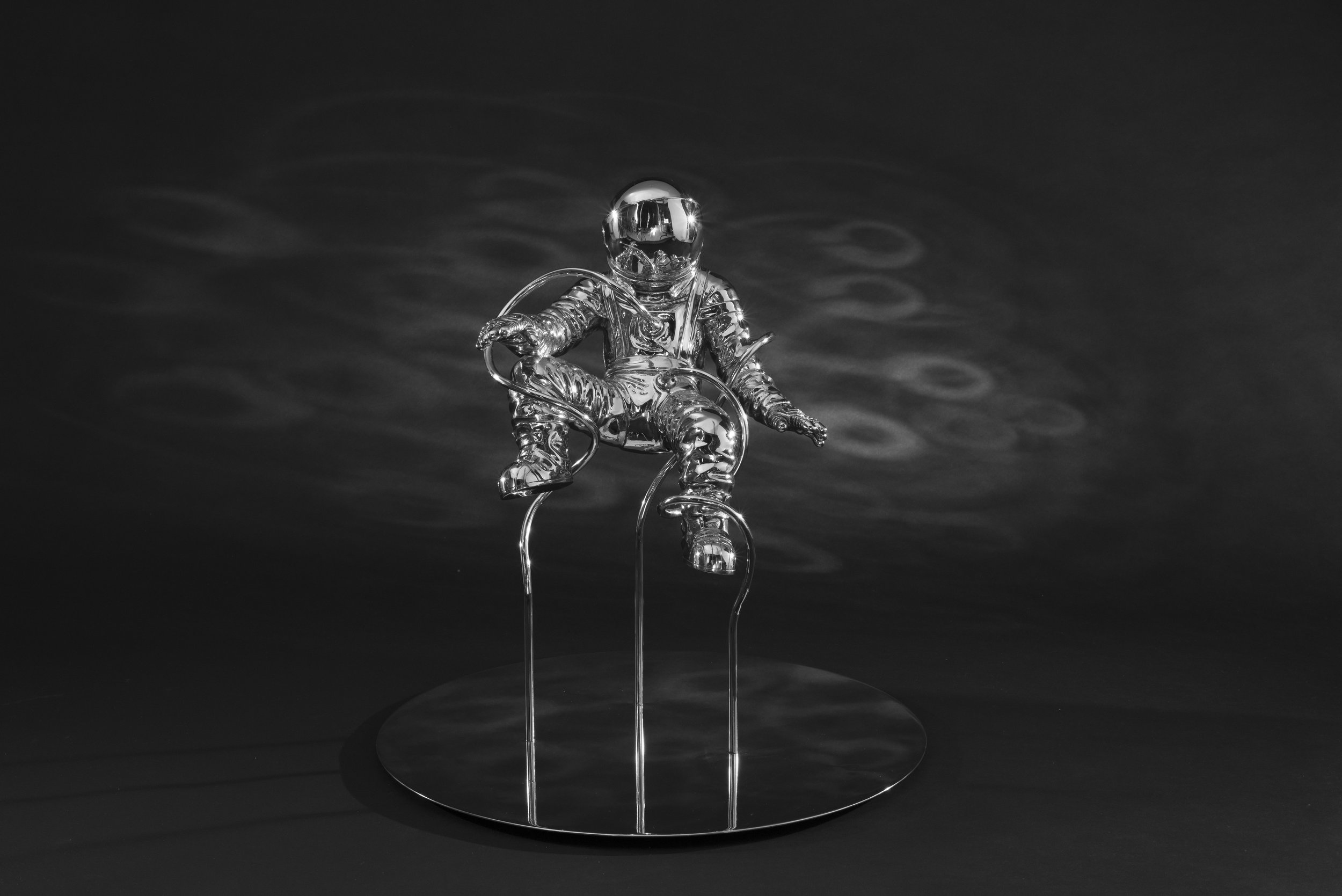
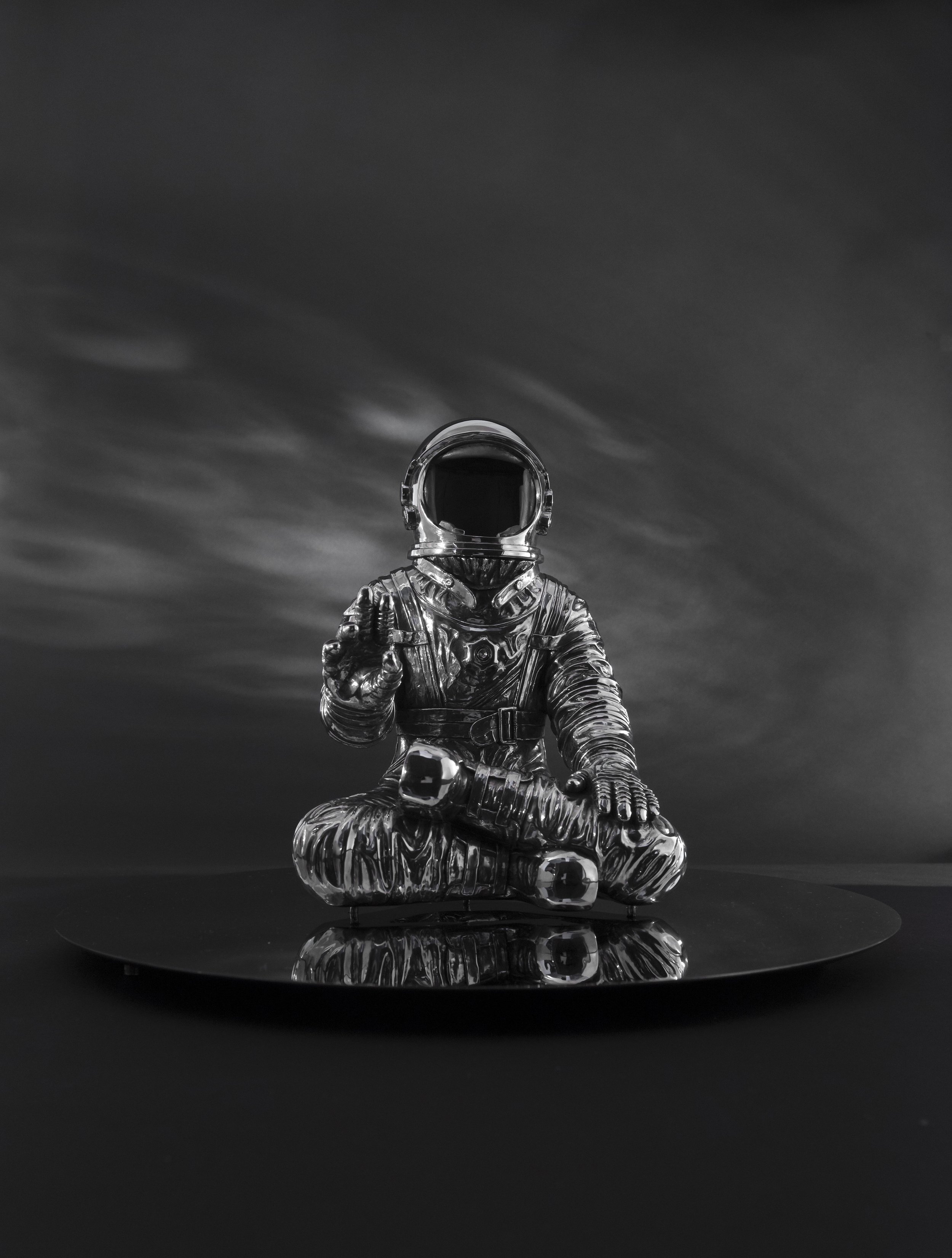
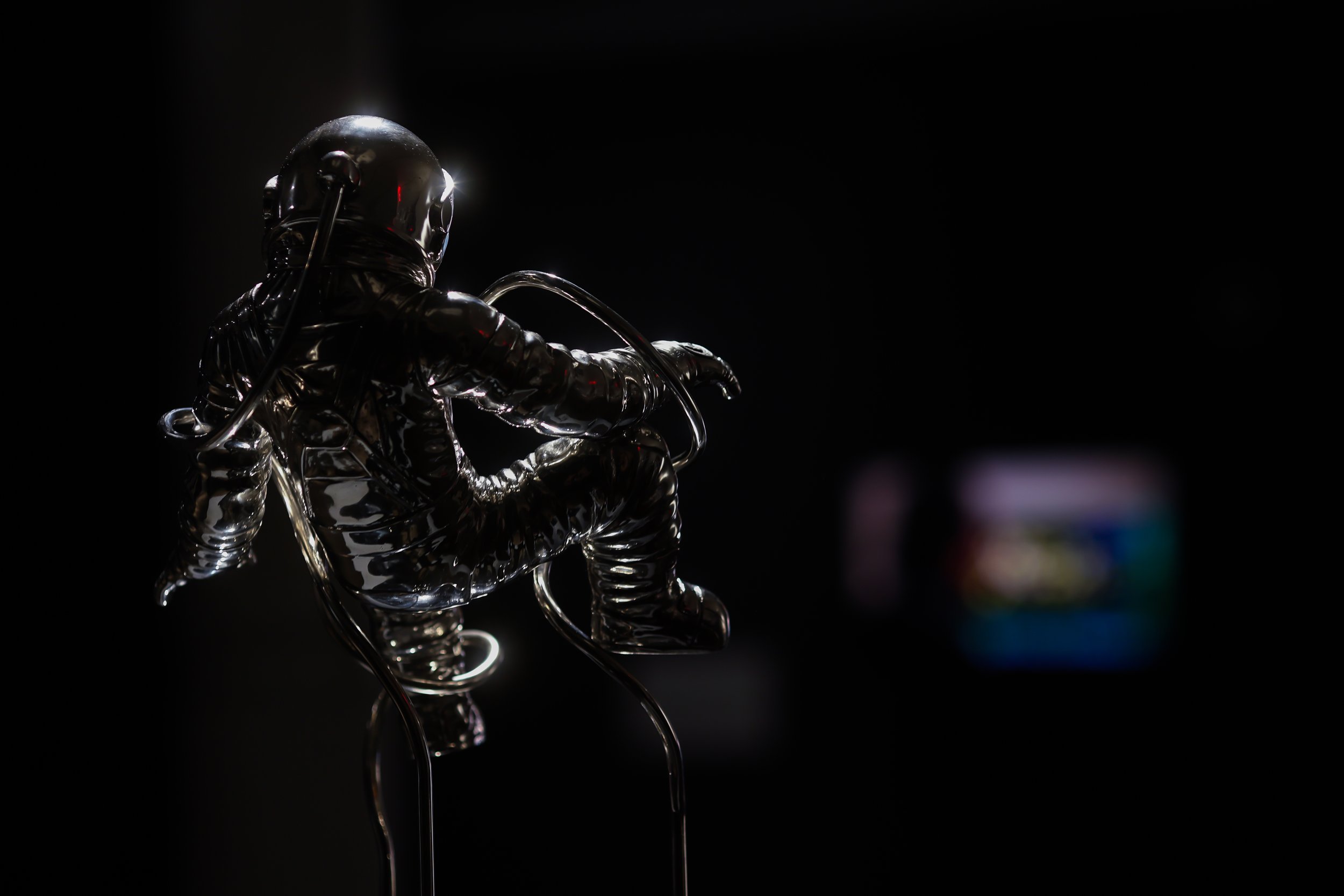
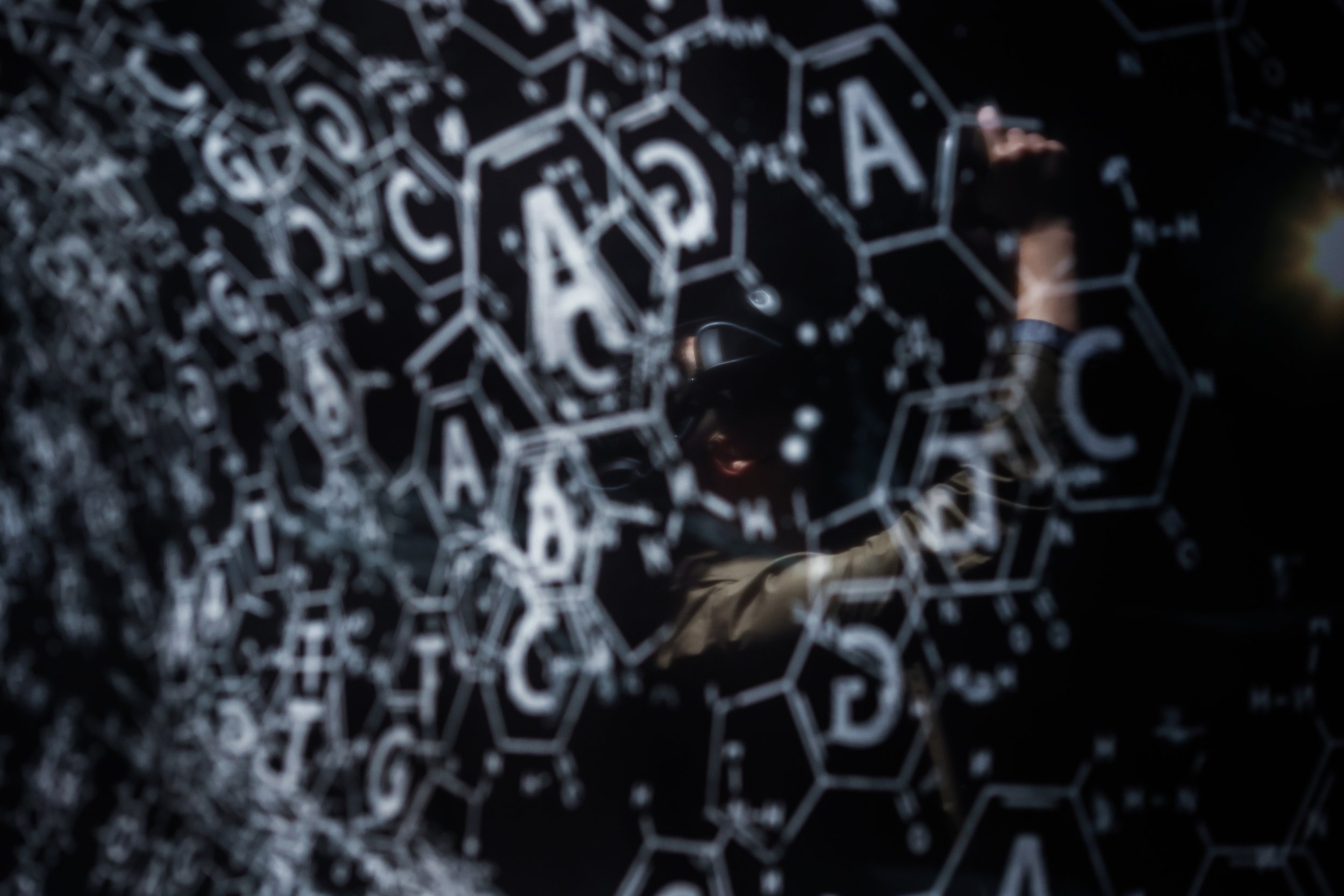
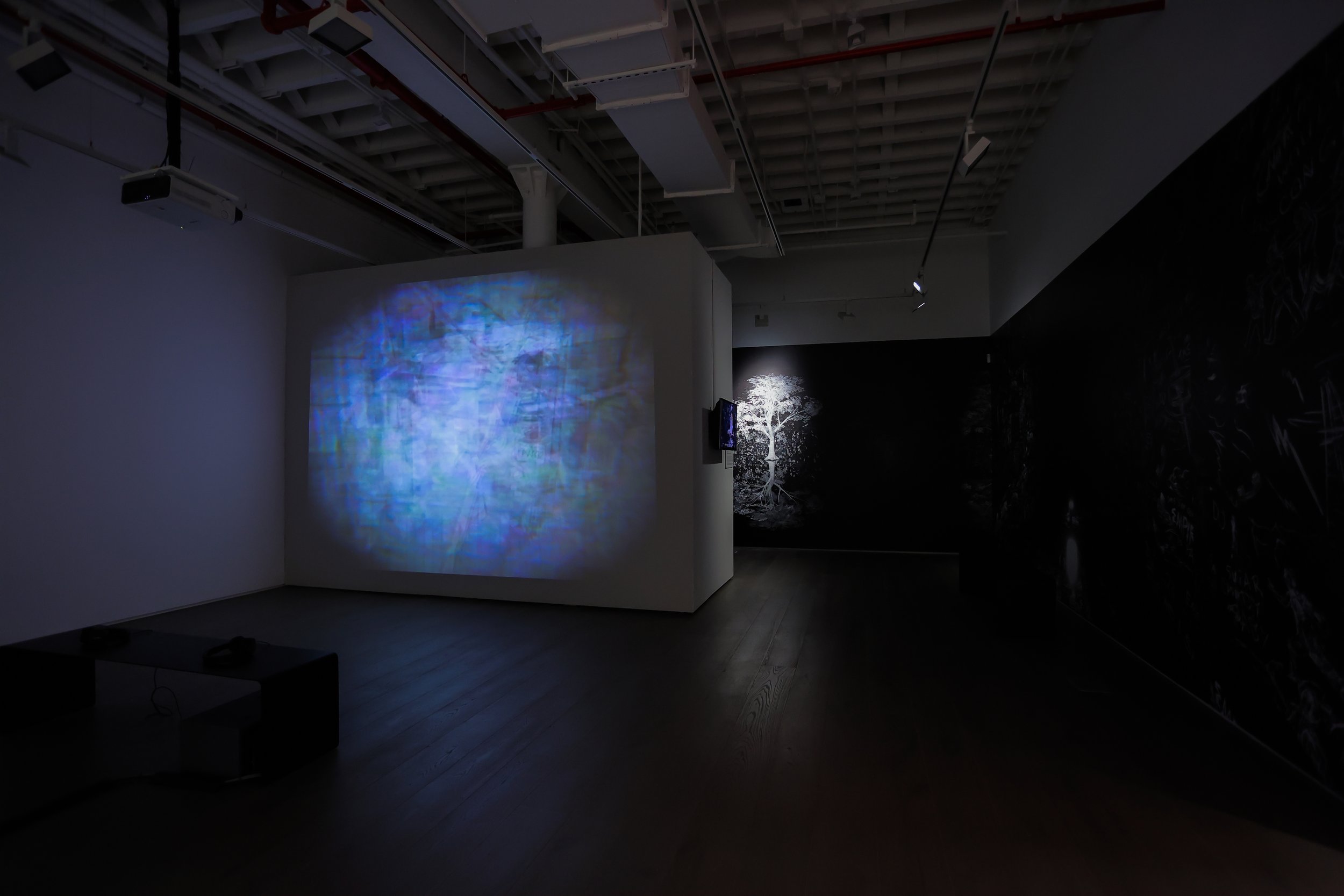
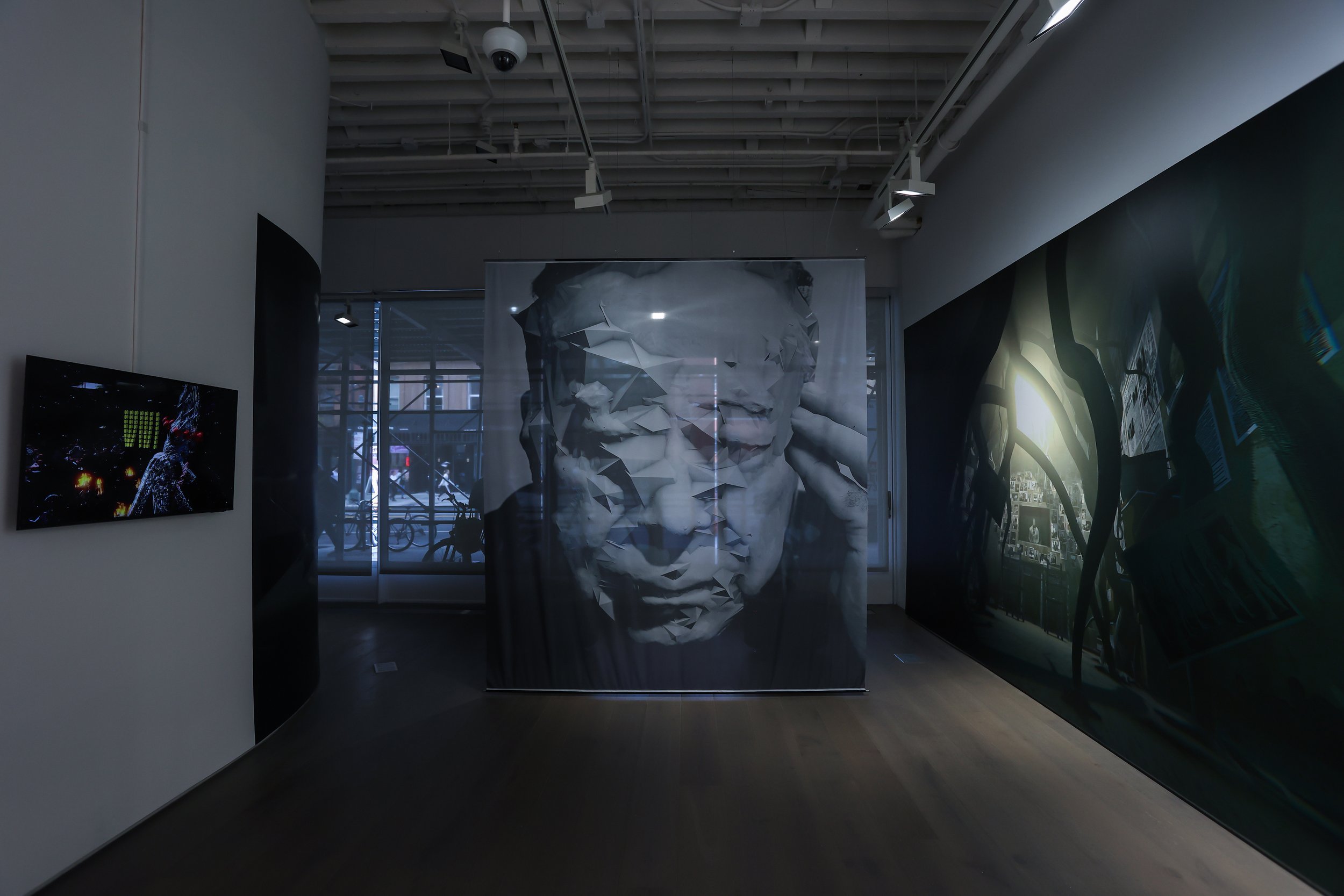
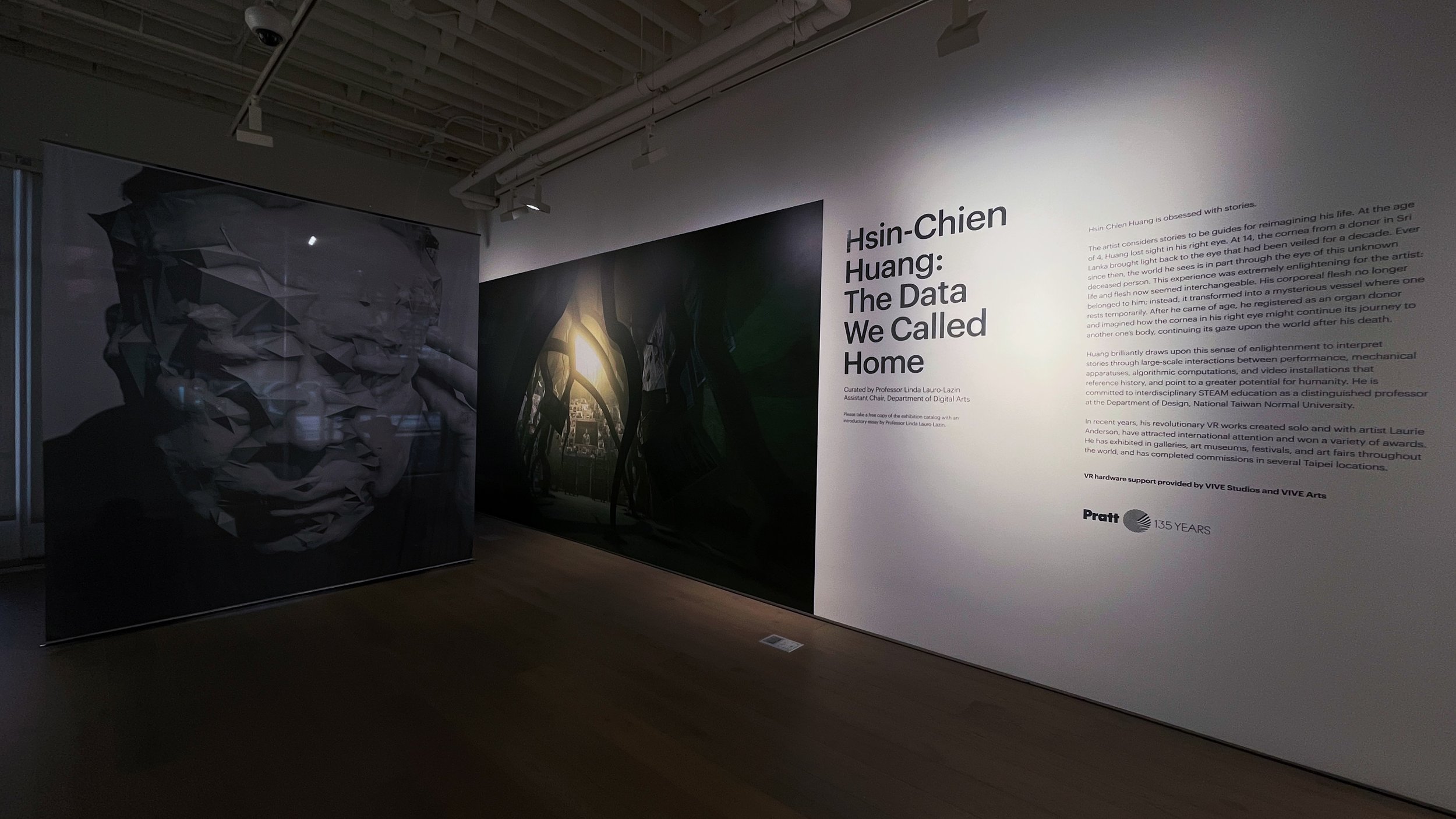
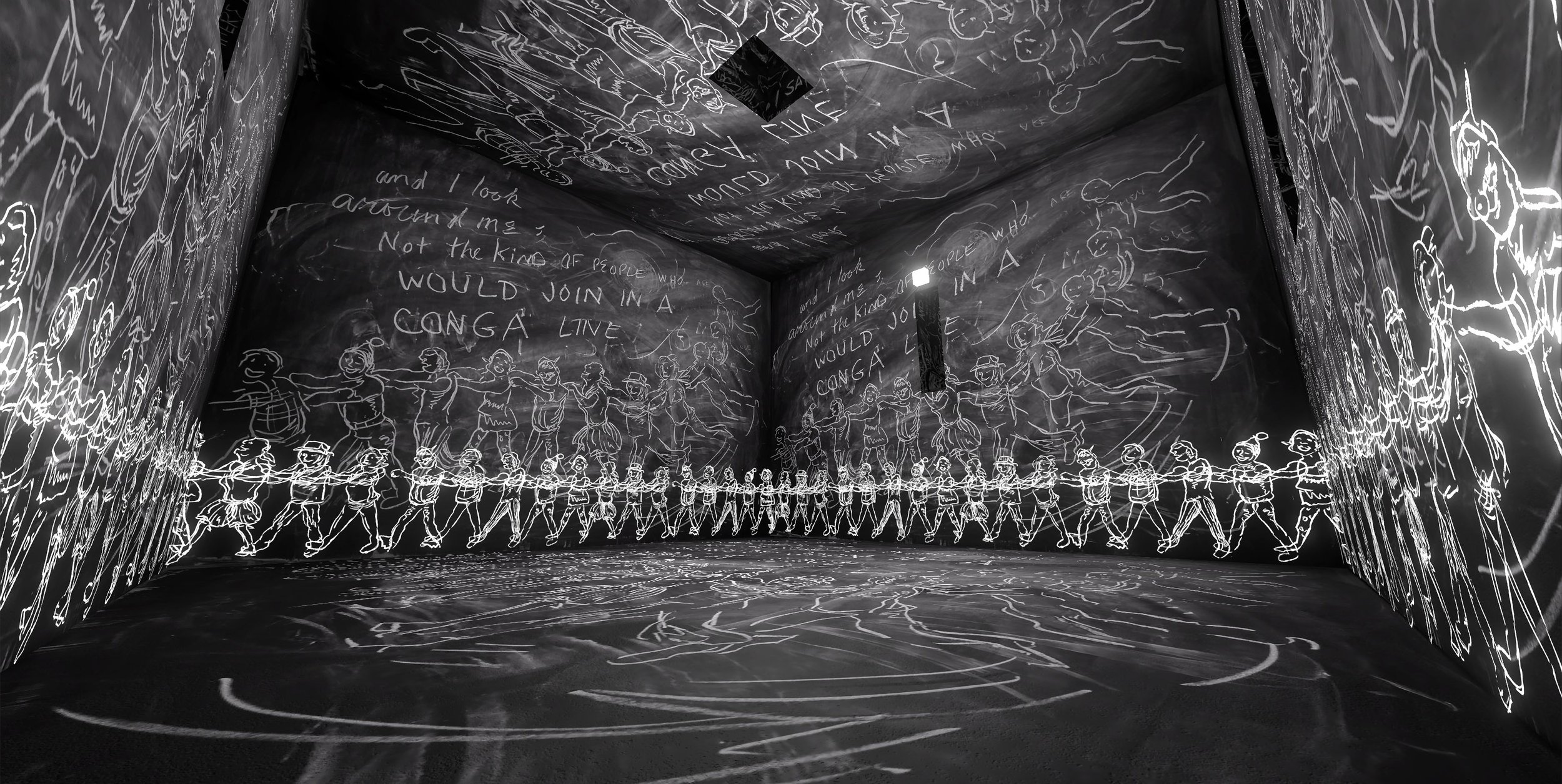

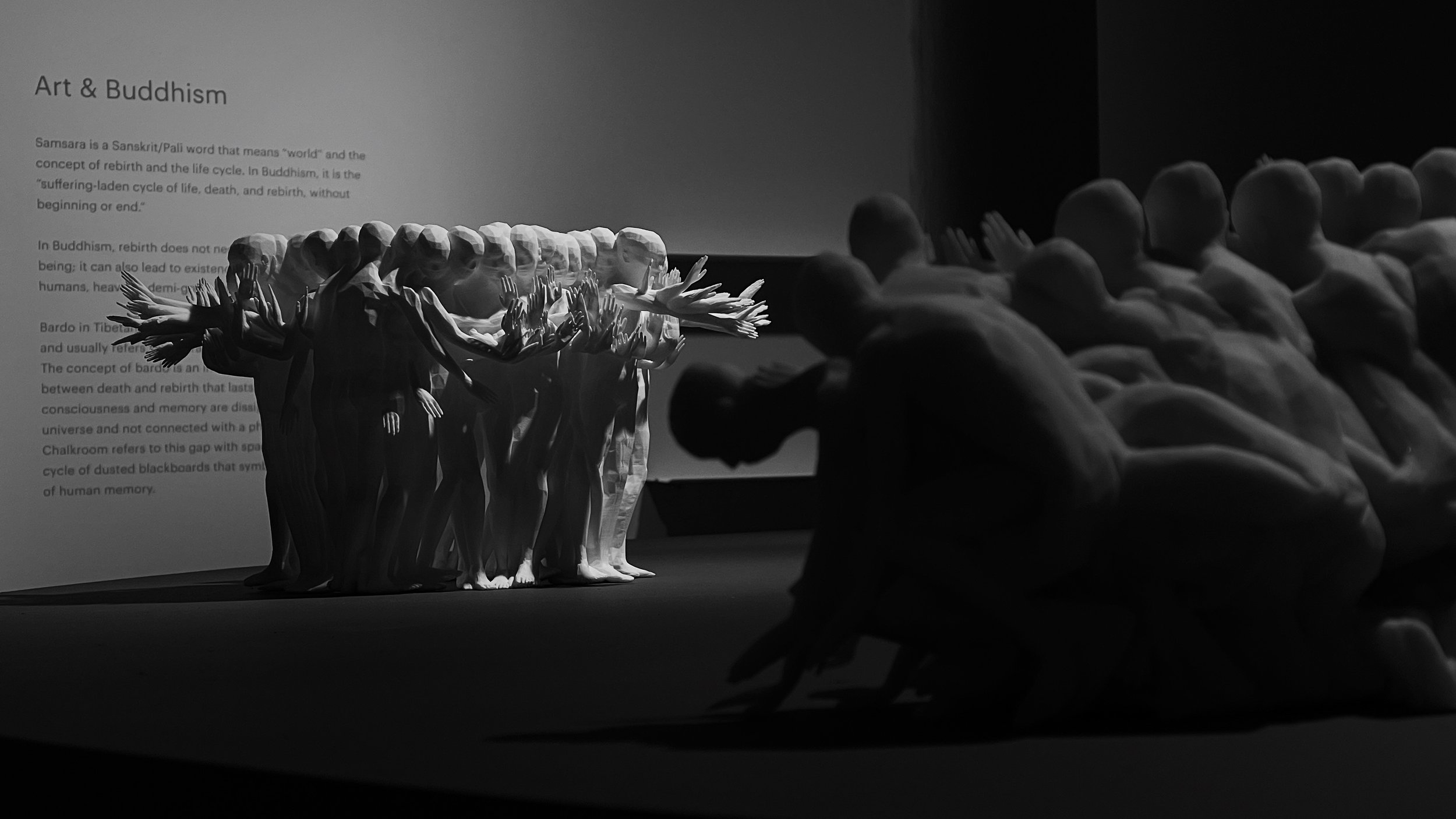
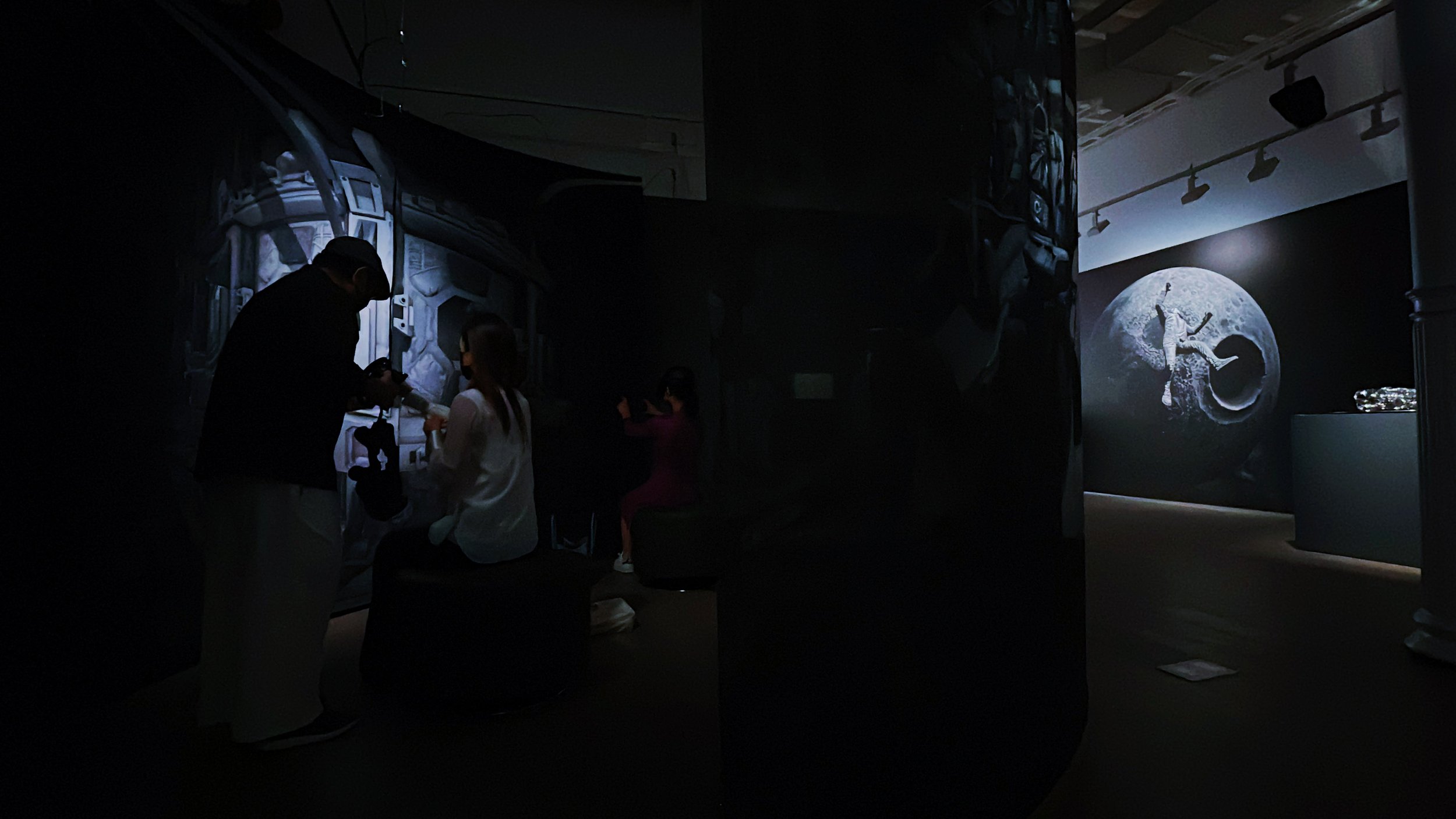
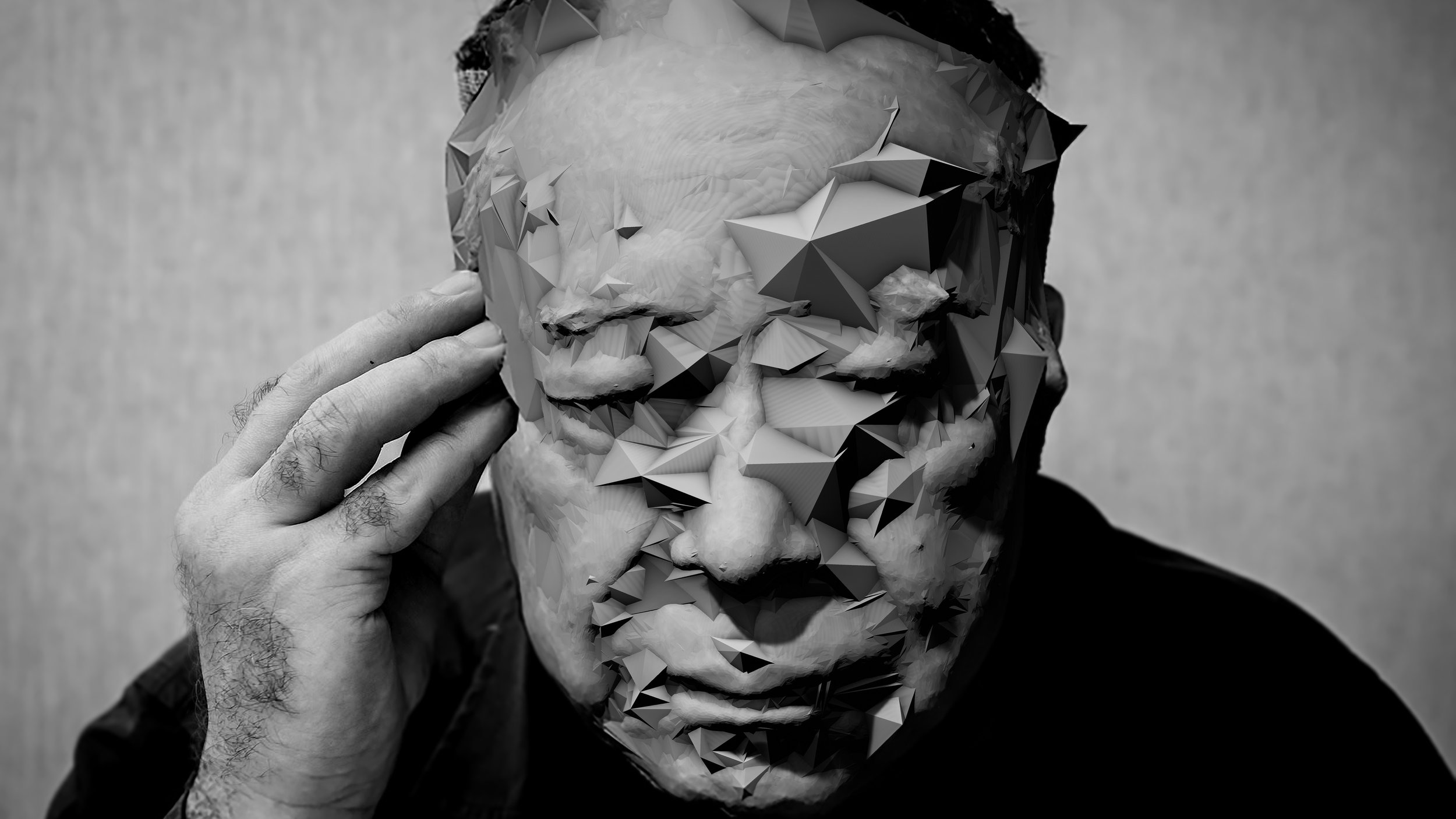


Hsin-Chien Huang: The Data We Called Home
September 23nd, 2022–March 4th, 2023
Open to Public
Location: Pratt Manhattan Gallery, 144 W 14th St, New York
Text/Pratt PR team, Artist’s studio; Editor/Iris Zhang
New York - Fou Gallery is pleased to announce that Taiwanese multi-disciplinary artist Hsin-Chien Huang debuted his first solo show in the United States at Pratt Manhattan Gallery from September 23, 2022, to March 4, 2023. The exhibition, Hsin-Chien Huang: The Data We Called Home, remaps Taiwanese folklore, the ethics of digital surveillance, space exploration, and the body-mind dichotomy across different media and features a seminal collaboration with artist Laurie Anderson. The exhibition highlights the broad scope of Huang’s complex body of work, featuring virtual reality films, sculptures, and videos presenting new perspectives on the immersive possibilities of mixed media art practices.
The show centers four large-scale virtual reality journeys (Samsara, 2021, Bodyless, 2019, To the Moon, 2018 and Chalkroom, 2017), alongside stainless steel sculptures and 3-D prints. The multimedia installations invite viewers to immerse themselves in the otherworldly spaces, stories, and forms reimagined by Hsin-Chien Huang. In these virtual realities, bodies are porous, chronologies are nonlinear, and environments become dystopian dreamscapes.
One of the exhibition highlights is Huang’s award-winning VR installation, Samsara. This project takes the viewer on a dream-like journey to the not-too-distant future when resources on Earth have been depleted and humans are forced to find a new home. The installation is an experiment based on the concept of “Embodied Cognition.” Only when we experience the world in different bodies may we truly appreciate the thoughts of others, empathize with them, and harmoniously comprehend our existence. Having already drawn critical attention, Samsara was selected for the 78th Venice VR Film Festival and won the Jury Award of the SXSW and Best VR Story of the Cannes XR competition.
The other two VR projects in the show are collaborative works by Hsin-Chien Huang and Laurie Anderson. To the Moon (2018), originally commissioned by the Louisiana Museum of Modern Art in Denmark, made its US premiere at the Museum of Natural History, timed to the fiftieth anniversary of the Apollo 11 moon landing. The artist duo reconceptualizes the moon in six segments, using images and tropes from Greek mythology, literature, science, and sci-fi space movies. The viewer is able to explore the surface of the new moon, glide through space debris, and fly through DNA skeletons of dinosaurs. Another large-scale VR installation, Chalkroom, 2017, features eight unique rooms with chalkboards emerging as a vast labyrinth. In this alternate reality, viewers are guided by co-creator Laurie Anderson’s voice through a sensorial landscape. Abstract symbols are converted into concrete, interactive, physical presences, allowing the audience to explore the connections between written words and memories. Chalkroom was awarded Best VR Experience at the 74th Venice Film Festival and was the first of several VR works that Huang and Anderson created together.
Three stainless steel sculptures titled “YUN-KUNG” sculpture series accompany the VR journey. Through these, Huang references historical Buddha statues and reframes them by stripping them of their humanity and turning them into robot-like creatures in high-tech armor, floating motionless in space.
The exhibit includes Huang’s standalone series of 3-D prints, Sculptures of Touch (2020). For these, the artist devised a digital system that would record his touch upon once untouchable martial law public objects such as barricades, bunkers, and monuments that remain in Taipei. The hand-traced objects were then re-visualized as images and 3D printed objects. Through these new sculptures, the artist explores "body memory" and the body’s physical performances and connections with history, art, and technology.
Through the union of the fictional and real worlds, artist Hsin-Chien Huang aims to showcase the original metaverse ecology from Taiwan in this exhibition. It displays the state of new media art in Asia today and provides a tangible example of the region's prowess in developing immersive VR experiences.
展览地点:Pratt Manhattan Gallery 普拉特艺术学院曼哈顿美术馆
文/普拉特新闻宣传团队与艺术家工作室;编辑/张琦
纽约 - 否画廊荣幸地宣布台湾新媒体艺术家黄心健于2022年9月23日至2023年3月4日在普拉特艺术学院美术馆(Pratt Manhattan Gallery)举办个展《我们称作家的资料》。展览由普拉特艺术学院兼任教授Linda Lauro-Lazin担任展览策展人,呈现黄心健最新创作的VR作品《轮回》;与萝瑞·安德森合作,在国际上屡获大奖的VR影片《登月》以及《沙中房间》;描绘台湾戒严时期记忆的VR实境体验《失身记》;和《蕴空》不锈钢雕塑系列作品。本次展览是黄心健在纽约的首次个展,也是艺术家在北美地区呈现的最大规模的机构个展。展览开幕于2022年9月22日晚间六点举行,普拉特画廊馆长 Nick Battis 主持开幕,策展人与艺术家黄心健举办开幕座谈。黄心健亦在开幕座谈中分享了自身的创作历程,以及台湾新媒体艺术的发展趋势。
黄心健曾前往美国纽约普拉特艺术学院(Pratt Institute)担任为客座访问学者,教授并分享其在新媒体艺术与虚拟实境的创作经验,在访问期间师生反应十分热烈,进而受校方特别邀请于该校的普拉特艺术学院美术馆举办个展活动,持续延伸艺术与文化上的交流。美国纽约普拉特艺术学院(Pratt Institute)为北美地区重要的学术机构,而隶属于其下的展演单位普拉特艺术学院美术馆更是坐落于纽约曼哈顿的精华地段,其作为全球艺术的交流重镇,黄心健预期可汲取多元的创作反馈和展演经验,并透过近年来所累积的国际声量与作品能量,充实并推广台湾当代艺术的文化力,希冀此次大型个展得以活络并串接台美两地实质的文化交流。这同时也是普拉特艺术学院曼哈顿美术馆举办的首次艺术展览。
本次展览中的作品《沙中房间》与《登月》是由黄心健和美国艺术家萝瑞·安德森所共同合作的虚拟实境互动作品。《沙中房间》在第74届威尼斯影展VR竞赛片单元中,成功摘下了 最佳VR体验大奖。其中的巨大黑板是一个象征人类记忆的符号,虽然可以不断地擦拭覆写,但旧有的记忆却残留不去。无数的巨型黑板建构了浩瀚的虚拟空间,犹如巨大的记忆迷宫;观众可随着导引进入幻梦般的世界,在虚拟实境中自由飞行。作品《登月》模拟了在人类登月五十周年,使观众从神话、文学、科学与政治的发想,用虚拟实境重回登月现场的旅程。在十五分钟的虚拟实境体验中,观众将会化身为太空人,在月球低重力的表面漫步飞行,穿梭于六个场景,从唯心的角度重写登月的历史。
本次展览还展出三件由不锈钢铸造而成的人形象雕塑 ——《蕴空》系列,由黄心健独立创作。以历史上著名的佛像雕塑为骨架,穿上太空装,成为漂浮于空中的太空人,但把“人” 的本质去除,只剩下一层皮相。这些雕塑暗示了当科技成为一种外壳,但内在的人性逐渐被架空消失。展览中另一VR电影《轮回》带着观众进入一场横亘千万年的科幻旅途,如同佛家思想中的六道轮回。观众在VR中不断地转世,成为不同的人与生物,用新的身体重新感受这宇宙,寻求自身性灵最终的超脱。故事背景设置于不远的未来,地球因为人心贪欲而过度损耗,引发资源匮乏,人们彼此争斗引发毁灭性的战争,最终人类被迫逃离地球,在宇宙中寻求新的家园。并随之引发一系列的苛问:他们最终找到的新家,是否是在时间与空间中的轮回?人类认为不断向前的演化与进步,因缺乏心灵的成长,可能也只是在原地打转的莫比乌斯环… 本作品从认知理论的“具身认知(Embodied Cognition)” 出发,用VR互动,让观众可以感受不同生物与角色的存在。
艺术家黄心健希冀藉本次展览由虚实维度之间的熔接,展现来自台湾原创的元宇宙生态系。宣达出亚洲现今新媒体艺术的发展状态,以及当今亚洲VR创作和沉浸式内容实力的具体展现。
Exhibition Catalogue
ARTIST - Hsin-Chien Huang (b. 1969, Taipei)
Hsin-Chien Huang is a new media artist adept at combining VR, interactive installations, performing arts, and machinery to explore greater possibilities for human life through technology. His career endeavor explores the possibilities of cutting-edge technologies in art, literature, design, and stage performance. His projects involve large-scale interdisciplinary interaction, performing, mechanical apparatus, algorithmic computations, and video installations. While being a distinguished professor at the Design Department of National Taiwan Normal University (NTNU), Huang is committed to interdisciplinary collaborative STEAM education and publication.


